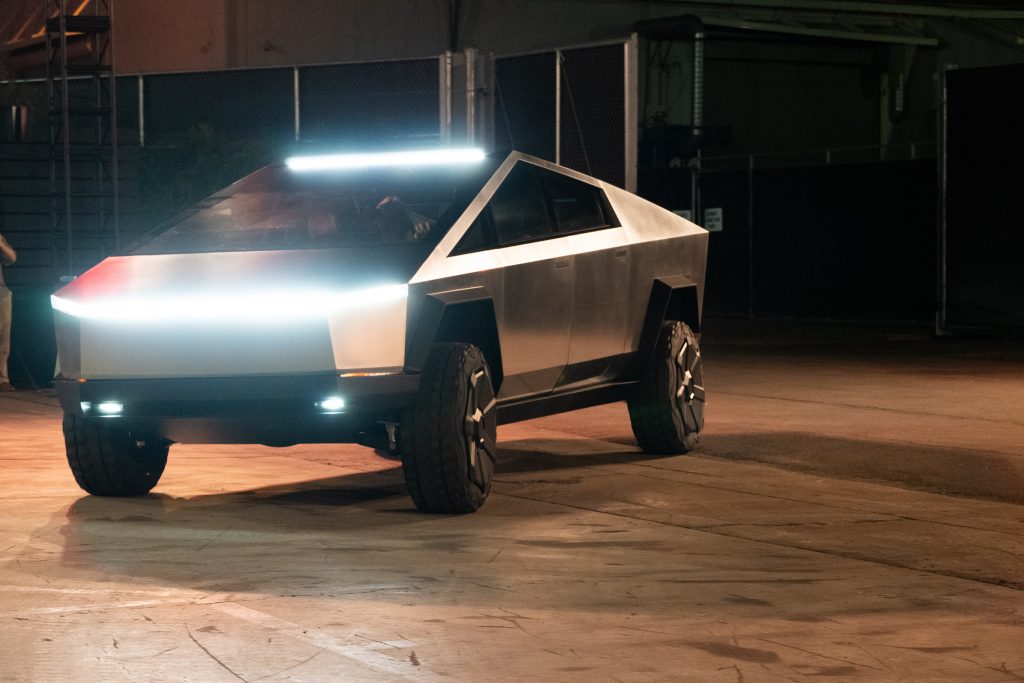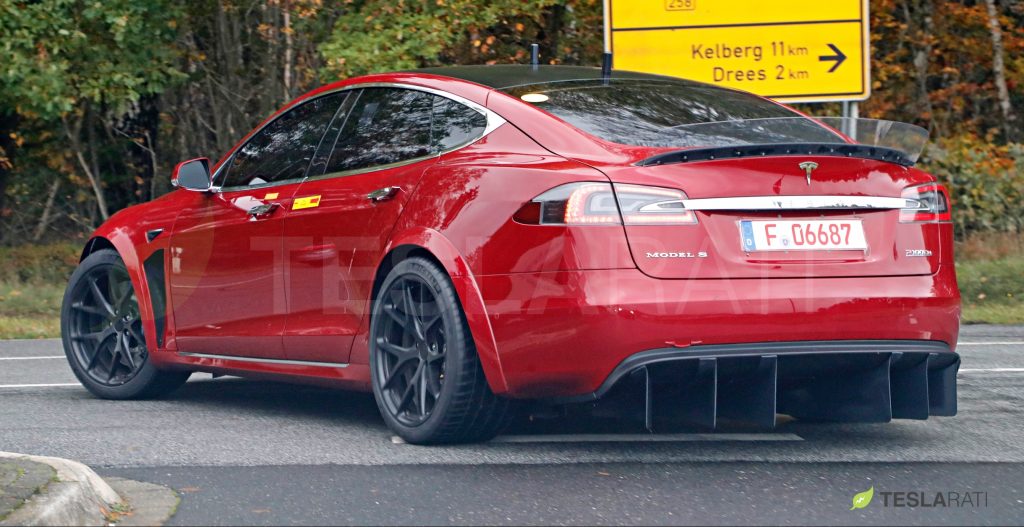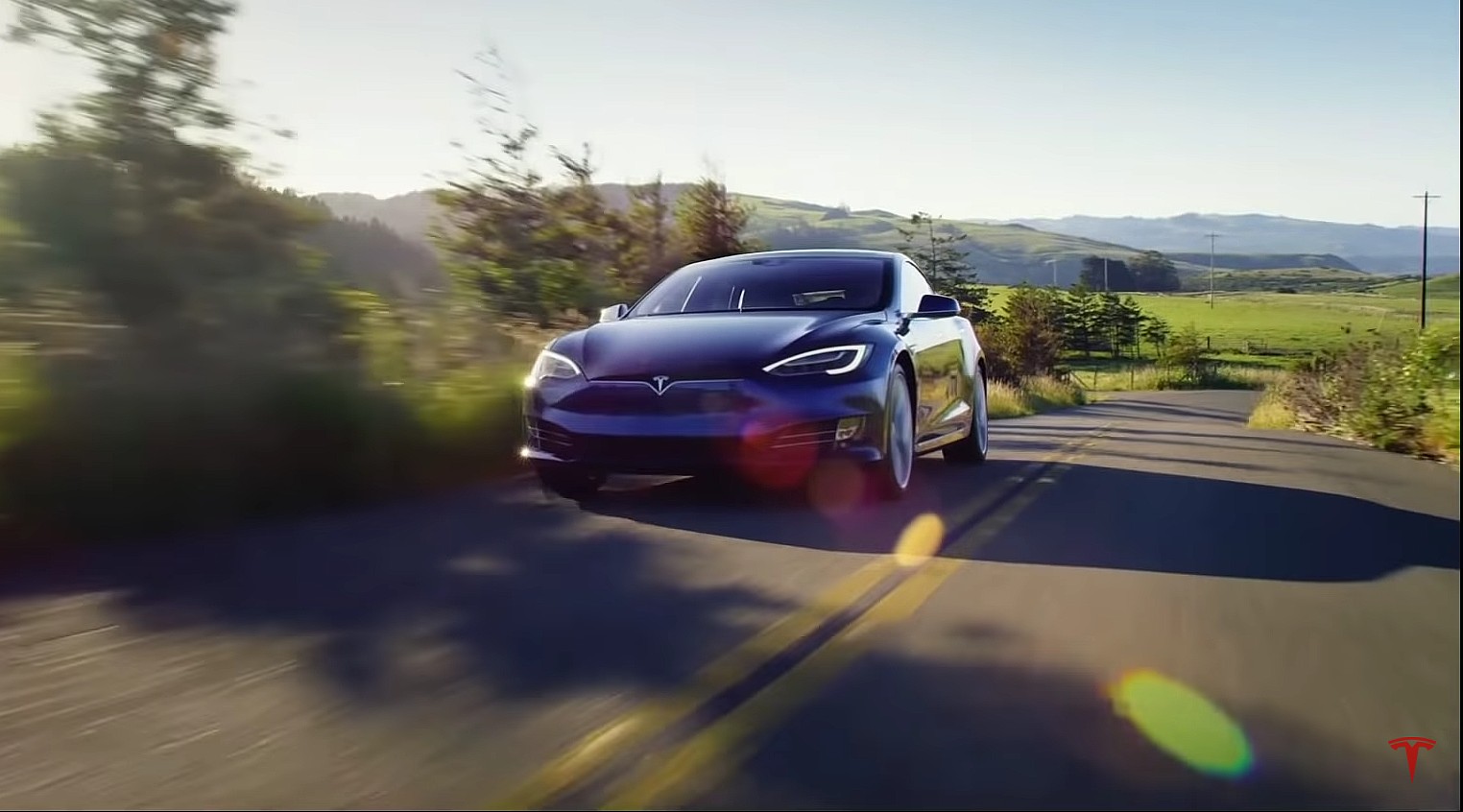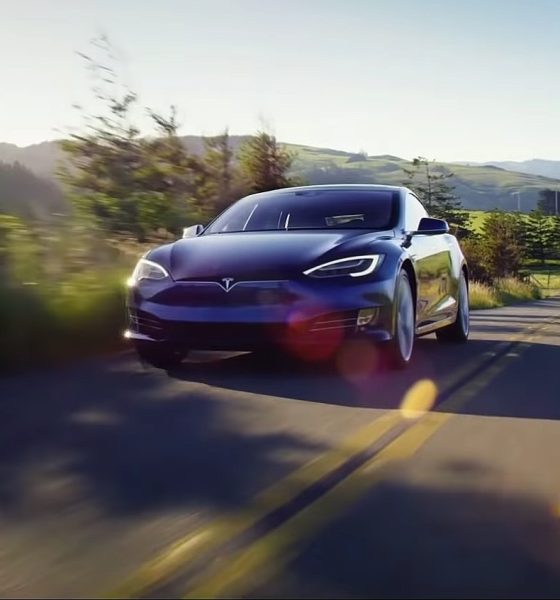Tesla Model S is closing in on 400 miles of range per charge. With this update, Tesla has definitively extended its lead in the EV market, putting it far ahead — at least from a range perspective — against its biggest competitors. What’s rather interesting is that the Model S’ 390-mile range is just the tip of the iceberg.
Being a constantly-innovating company, it’s difficult to put the finger on the generations of vehicles that Tesla releases. Yet one look at the company’s upcoming electric cars and one would know that its next vehicles will feature next-generation technology. The Model Y, for example, is built from the company’s experiences with the Model 3, and pictures of the all-electric crossover in the assembly line hint that its casting may be quite unique. Tesla will likely not experience as many challenges ramping the Model Y compared to its previous vehicles, and this is likely due to the company’s experience.
There’s the Semi and the Cybertruck as well, both of which are large vehicles that would otherwise require a ton of batteries to get their estimated range. Yet in the case of the Cybertruck, the vehicle will be offering over 500 miles of range for less than $70,000. How Tesla will accomplish this remains to be seen, but Global Equities Research analyst Trip Chowdhry noted that the Cybertruck is on a “completely different technology orbit” after taking a test ride in the all-electric truck at Tesla’s Fremont factory.

Some of these improvements are already coming soon. Later this year, Tesla is expected to release the Model S’ Plaid Powertrain variant, which will be track-capable and boast an insane amount of power with its tri-motor setup. Elon Musk noted recently on Twitter that the Plaid Model S has “absurd” performance, though the electric car maker will ensure that the vehicle still gets enough range. This comment may seem like a typical Elon Musk update, but it shows a lot about Tesla’s experience as a veteran electric car maker.
Making an electric car is not easy. Making a great electric car is twice as difficult. This is something that veteran automakers are now learning, with each vehicle that they release. Premium EVs seem to be the ones learning this lesson the hardest, especially as otherwise great cars like the Audi e-tron and the Jaguar I-PACE end up being bogged down by issues such as range. Yet among carmakers and “Tesla Killers” that have come out, the Porsche Taycan seems to be the best example of this experience gap.
The Porsche Taycan is a beautifully-designed electric sports car, and it works like one. It’s top-tier variant, the $185,000 Taycan Turbo S, is arguably the only vehicle that can beat a Raven Model S Performance on the drag strip fair and square. Yet for all its speed and power, the Taycan suffers from poor efficiency, as evidenced by the Turbo S’ 192-mile EPA rated range. Granted, tests from motoring publication Car and Driver suggest that the Taycan’s range is more tuned for Autobahn driving, but the gap between the vehicle and the Model S is very evident. This becomes even more notable when one considers that both cars’ battery packs are similarly-sized.

The Model S’ Long Range Plus update means that through incremental improvements on electric car batteries, Tesla is now able to draw out 390 miles out of a 100 kWh pack. That’s just about 20 miles short of Rivian’s 400-mile trucks, and those vehicles are equipped with a 180 kWh battery pack. This matters a lot, and this is a benchmark that will probably take a few years to beat.
During Porsche’s Annual Press Conference last year, the company’s executives focused a lot of their discussions on the Taycan, whose development represented a multi-billion-dollar initiative for the company. Following the main conference, I was fortunate enough to be part of a group of reporters who were able to get a brief Q&A session with Porsche Board Member for Sales and Marketing Detlev Von Platen. When it was my turn to ask a question, I inquired about Porsche’s strategy about the Taycan’s range, and how the company plans to prevent the vehicle from being the electric equivalent of a gas guzzler.
The Board Member’s response did not directly address my inquiry, though he did emphasize that Porsche is no neophyte with battery tech due to its efforts with high-performance hybrid sports cars like the 918 Spyder. This is a fair point to make, of course, though looking at the Taycan’s range, it appears that the company still needs a few more iterations of its flagship electric car before it can expertly balance performance and range in a pure EV. The Tesla Model S Plaid is coming to establish itself as the undisputed king of consumer EVs, after all. If Elon Musk’s words are any indication, it would be a triple-motor monster with frighteningly quick acceleration and a range that’s still close to 400 miles.
That’s going to be a far tougher rival than the Tesla Model S Performance.

News
Tesla China delivery centers look packed as 2025 comes to a close
Needless to say, it appears that Tesla China seems intent on ending 2025 on a strong note.

Tesla’s delivery centers in China seem to be absolutely packed as the final days of 2025 wind down, with photos on social media showing delivery locations being filled wall-to-wall with vehicles waiting for their new owners.
Needless to say, it appears that Tesla China seems intent on ending 2025 on a strong note.
Full delivery center hints at year-end demand surge
A recent image from a Chinese delivery center posted by industry watcher @Tslachan on X revealed rows upon rows of freshly prepared Model Y and Model 3 units, some of which were adorned with red bows and teddy bears. Some customers also seem to be looking over their vehicles with Tesla delivery staff.
The images hint at a strong year-end push to clear inventory and deliver as many vehicles as possible. Interestingly enough, several Model Y L vehicles could be seen in the photos, hinting at the demand for the extended wheelbase-six seat variant of the best-selling all-electric crossover.
Strong demand in China
Consumer demand for the Model Y and Model 3 in China seems to be quite notable. This could be inferred from the estimated delivery dates for the Model 3 and Model Y, which have been extended to February 2026 for several variants. Apart from this, the Model Y and Model 3 also continue to rank well in China’s premium EV segment.
From January to November alone, the Model Y took China’s number one spot in the RMB 200,000-RMB 300,000 segment for electric vehicles, selling 359,463 units. The Model 3 sedan took third place, selling 172,392. This is quite impressive considering that both the Model Y and Model 3 are still priced at a premium compared to some of their rivals, such as the Xiaomi SU7 and YU7.
With delivery centers in December being quite busy, it does seem like Tesla China will end the year on a strong note once more.
News
Tesla Giga Berlin draws “red line” over IG Metall union’s 35-hour week demands
Factory manager André Thierig has drawn a “red line” against reducing Giga Berlin’s workweek to 35 hours, while highlighting that Tesla has actually increased its workers’ salaries more substantially than other carmakers in the country.

Tesla Giga Berlin has found itself in a new labor dispute in Germany, where union IG Metall is pushing for adoption of a collective agreement to boost wages and implement changes, such as a 35-hour workweek.
In a comment, Giga Berlin manager André Thierig drew a “red line” against reducing Giga Berlin’s workweek to 35 hours, while highlighting that Tesla has actually increased its workers’ salaries more substantially than other carmakers in the country.
Tesla factory manager’s “red line”
Tesla Germany is expected to hold a works council election in 2026, which André Thierig considers very important. As per the Giga Berlin plant manager, Giga Berlin’s plant expansion plans might be put on hold if the election favors the union. He also spoke against some of the changes that IG Metall is seeking to implement in the factory, like a 35-hour week, as noted in an rbb24 report.
“The discussion about a 35-hour week is a red line for me. We will not cross it,” Theirig said.
“(The election) will determine whether we can continue our successful path in the future in an independent, flexible, and unbureaucratic manner. Personally, I cannot imagine that the decision-makers in the USA will continue to push ahead with the factory expansion if the election results favor IG Metall.”
Giga Berlin’s wage increase
IG Metall district manager Jan Otto told the German news agency DPA that without a collective agreement, Tesla’s wages remain significantly below levels at other German car factories. He noted the company excuses this by referencing its lowest pay grade, but added: “The two lowest pay grades are not even used in car factories.”
In response, Tesla noted that it has raised the wages of Gigafactory Berlin’s workers more than their German competitors. Thierig noted that with a collective agreement, Giga Berlin’s workers would have seen a 2% wage increase this year. But thanks to Tesla not being unionized, Gigafactory Berlin workers were able to receive a 4% increase, as noted in a CarUp report.
“There was a wage increase of 2% this year in the current collective agreement. Because we are in a different economic situation than the industry as a whole, we were able to double the wages – by 4%. Since production started, this corresponds to a wage increase of more than 25% in less than four years,” Thierig stated.
News
Tesla is seeing a lot of momentum from young Koreans in their 20s-30s: report
From January to November, young buyers purchased over 21,000 Teslas, putting it far ahead of fellow imported rivals like BMW and Mercedes-Benz.

Tesla has captured the hearts of South Korea’s 20s-30s demographic, emerging as the group’s top-selling imported car brand in 2025. From January to November, young buyers purchased over 21,000 Teslas, putting it far ahead of fellow imported rivals like BMW and Mercedes-Benz.
Industry experts cited by The Economist attributed this “Tesla frenzy” to fandom culture, where buyers prioritize the brand over traditional car attributes, similar to snapping up the latest iPhone.
Model Y dominates among young buyers
Data from the Korea Imported Automobile Association showed that Tesla sold 21,757 vehicles to the 20s-30s demographic through November, compared to BMW’s 13,666 and Mercedes-Benz’s 6,983. The Model Y led the list overwhelmingly, with variants like the standard and Long Range models topping purchases for both young men and women.
Young men bought around 16,000 Teslas, mostly Model Y (over 15,000 units), followed by Model 3. Young women followed a similar pattern, favoring Model Y (3,888 units) and Model 3 (1,083 units). The Cybertruck saw minimal sales in this group.
The Model Y’s appeal lies in its family-friendly SUV design, 400-500 km range, quick acceleration, and spacious cargo, which is ideal for commuting and leisure. The Model 3, on the other hand, serves as an accessible entry point with lower pricing, which is valuable considering the country’s EV subsidies.
The Tesla boom
Experts described Tesla’s popularity as “fandom culture,” where young buyers embrace the brand despite criticisms from skeptics. Professor Lee Ho-geun called Tesla a “typical early adopter brand,” comparing purchases to iPhones.
Professor Kim Pil-soo noted that young people view Tesla more as a gadget than a car, and they are likely drawn by marketing, subsidies, and perceived value. They also tend to overlook news of numerous recalls, which are mostly over-the-air software updates, and controversies tied to the company.
Tesla’s position as Korea’s top import for 2025 seems secured. As noted by the publication, Tesla’s December sales figures have not been reported yet, but market analysts have suggested that Tesla has all but secured the top spot among the country’s imported cars this year.










